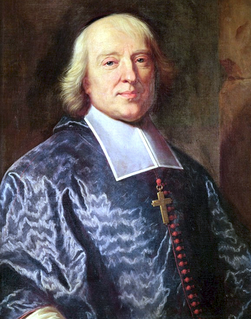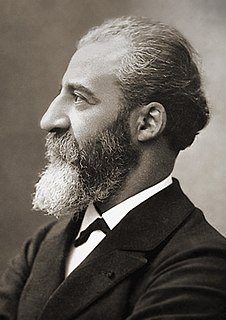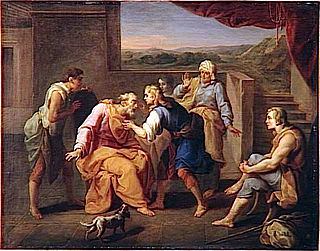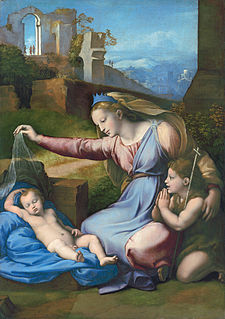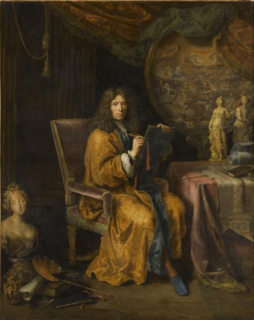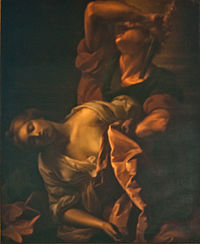
The Prix de Rome or Grand Prix de Rome was a French scholarship for arts students, initially for painters and sculptors, that was established in 1663 during the reign of Louis XIV of France. Winners were awarded a bursary that allowed them to stay in Rome for three to five years at the expense of the state. The prize was extended to architecture in 1720, music in 1803, and engraving in 1804. The prestigious award was abolished in 1968 by André Malraux, the Minister of Culture.

Meaux Cathedral is a Roman Catholic church in the town of Meaux, France. It is located in the department of Seine-et-Marne, east of Paris. The cathedral is a national monument, and is the seat of the Bishop of Meaux.
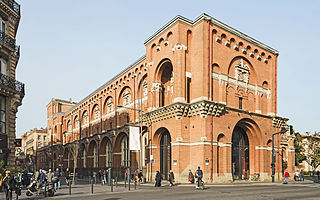
The Musée des Augustins de Toulouse is a fine arts museum in Toulouse, France which conserves a collection of sculpture and paintings from the Middle Ages to the early 20th century. The paintings are from throughout France, the sculptures representing Occitan culture of the region with a particularly rich assemblage of Romanesque sculpture.
The Drevet Family were leading portrait engravers of France for over a hundred years. Their fame began with Pierre, and was sustained by his son, Pierre-Imbert, and by his nephew, Claude.
Gui Rochat is an international private art dealer and consultant, dealing primarily in seventeenth- and eighteenth-century French paintings and drawings, working from New York as "Gui Rochat Old Masters". His long experience with four art auction houses, Sotheby's, Phillips, Son & Neale, Butterfields and Doyle New York has given him the background for rescuing a number of Old Master paintings from oblivion. He is proud to have Antoine Le Grand Batard de Bourgogne (1421-1504) *, painted by Rogier van der Weyden as well as by Hans Memling, as a direct ancestor.
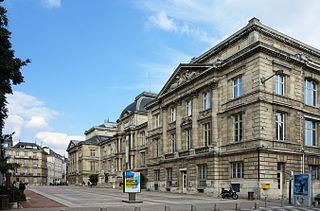
The musée des Beaux-Arts de Rouen is an art museum in Rouen, Normandy, France. Founded in 1801 by Napoleon I, its current building was built between 1880 and 1888 and underwent complete renovation in 1994. It houses painting, sculpture, drawing and decorative art collections.

Jean Ranc was a French painter, mainly active in portraiture. He trained under his father Antoine Ranc and his father's former student Hyacinthe Rigaud and served in the courts of both Louis XV of France and Philip V of Spain.
Louis Bossuet was a French parlementaire.

The Musée des Beaux-Arts de Tours is located in the bishop's former palace, near the cathedral St. Gatien, where it has been since 1910. It displays rich and varied collections, including that of painting which is one of the first in France both in quality and the diversity of the works presented.
Events from the year 1704 in France.

Nicolas-Henri Tardieu, called the "Tardieu the elder", was a prominent French engraver, known for his sensitive reproductions of Antoine Watteau's paintings. He was appointed graveur du roi to King Louis XV of France. His second wife, Marie-Anne Horthemels, came from a family that included engravers and painters. She is known as an engraver in her own right. Nicolas-Henri and Marie-Anne Tardieu had many descendants who were noted artists, most of them engravers.

Henri-Pons de Thiard de Bissy was a French priest who was Bishop of Toul from 1687 to 1704, Bishop of Meaux from 1704 to 1737, and Cardinal from 1715 to 1737.

The Musée des beaux-arts de Marseille is one of the main museums in the city of Marseille, in the Provence-Alpes-Côte d'Azur region. It occupies a wing of the Palais Longchamp, and displays a collection of paintings, sculptures and drawings from the 16th to 19th centuries.
Ernest Henri Dubois, was a French sculptor. He enrolled in 1881 at the École des Arts décoratiif and then attended the École des Beaux-Arts in Paris where he studied under Alexandre Falguière, Henri Chapu and Jules Chaplain. It was his award of the commission to carry out the sculptural work on the tomb of Jacques-Bénigne Bossuet in Meaux Cathedral that gave his career a boost and saw him awarded a Medal of Honour and subsequently he became a Chevalier de la Légion d'honneur.

François Dumont was a French sculptor.

